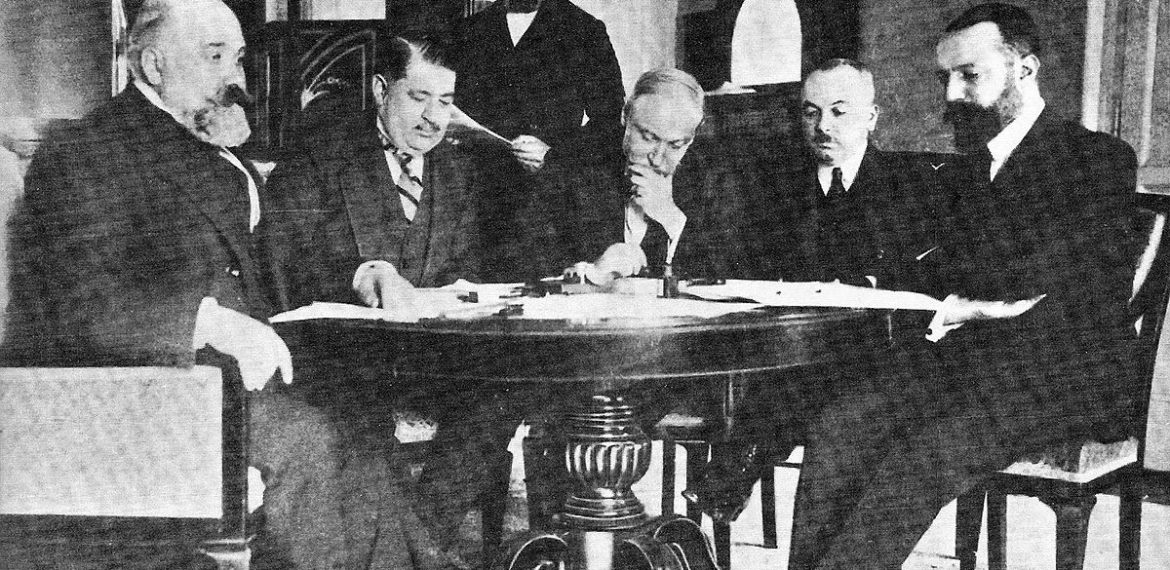Nella foto in alto: Delegazione turca e italiana a Losanna. Da destra a sinistra: Giuseppe Volpi, Roumbeyoglou Fahreddin, Guido Fusinato, Mèhemmed Naby Bey, Pietro Bertolini. Fonte immagine: wikipedia.
The Lausanne conference, which convened in order to revise the Treaty of Sèvres (10 August 1920), had been provided for in the Armistice of Mudania (11 October 1922). It lasted from 20 November 1922 to 24 July 1923, with a short break of two and a half months from February to April.
Representatives of eight countries took part in the proceedings: Great Britain, France, Italy, Japan, Roumania, Serbia, Greece and Turkey. The United States also participated, as an observer.
The British, French and Italian delegations were headed by their Foreign Ministers,1 while the delegations of Turkey and Greece were headed by Ismet Pasha2 and El. Venizelos respectively.3
The Prime Ministers of France and Italy, Poincaré and Mussolini, attended the opening session of the conference, at the Casino Mont Benon in Lausanne. English, French and Italian were designated as the official languages for the remainder of the conference, held in the Hôtel du Chateau, Lausanne.
In its final form, the Treaty of Lausanne consisted of 143 articles. Three conventions4 and two protocols were signed along with it. Although, in its final article, the Treaty laid down that its ratification was to begin as soon as possible, in practice this did not prove feasible until August 1924.
The Treaty of Lausanne ceded to Turkey all the territory held by Greece in Asia Minor, Eastern Thrace5 (with Karagatch and the Arda-Evros triangle,6 Imbros, Tenedos and the Rabbit Islands, while sovereignty over the remaining islands of the Eastern Mediterranean passed to Greece,7 as specified in article 12. Finally, all Turkish titles and rights to the Dodecanese were transferred to Italy, along with the island of Castellorizo.8 In effect, Greece failed to fulfil the national claims which had been satisfied by the Treaty of Sèvres (10 August 1920).9 Venizelos, in a lengthy memorandum to the Allies (30 December 1918), had described in detail the distribution of the intrinsically Greek population which resided in areas adjacent to the Greek state.10 However, the Sèvres Peace Treaty was never ratified by the contracting parties, and thus it was never enforced. For Turkey, the Treaty of Sèvres signalled the end of the Ottoman Empire; for Greece, impoverished and without any help from its allies, it left the country exposed to the perils of Kemalist nationalism. As a result, three years later, it lost at Lausanne precisely what it had gained at Sèvres.
